Finally, a guide for upper elementary teachers that will show you how to teach research reports in a step-by-step format!
If you are struggling with teaching the research report process, you are not alone. Seriously, we’ve all been there!
I spent several years avoiding research reports for my 5th grade writers or simply depending on the Library-Media Specialist to teach the research process.
One year, I decided to take the plunge and teach my students how to research a topic and write a research report.
The process was clunky at first, but I learned a lot about how students approach research and how to guide them from choosing a topic to completing their final copies.
Before we discuss the HOW, let’s talk about the WHY.

Why You Should Be Assigning Research Reports to Your 5th and 6th Grade Students
I have three main reasons for assigning research reports to my students.
First, the skill involved in finding reliable sources and citing sources is valuable.
Beginning in 5th grade, and possibly even before, students need to be able to discern the reliability of a source. They should be able to spot propaganda and distinguish between reputable sources and phony ones.
Teaching the procedure for citing sources is important because my 5th grade students need to grasp the reality of plagiarism and how to avoid it.
By providing information about the sources they used, students are consciously avoiding copying the work of authors and learning to give credit where credit is due.
Second, by taking notes and organizing their notes into an outline, students are exercising their ability to find main ideas and corresponding details.
Being able to organize ideas is crucial for young writers.
Third, when writing research reports, students are internalizing the writing process, including organizing, writing a rough draft, proofreading/editing, and writing a final draft.
When students write research reports about topics of interest, they are fine-tuning their reading and writing skills.
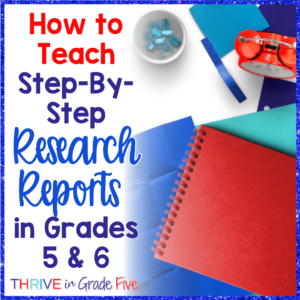
How to Teach Step-By-Step Research Reports in Grades 5 & 6
As a veteran upper elementary teacher, I know exactly what is going to happen when I tell my students that we are going to start research reports.
There will be a resounding groan followed by students voicing their displeasure. (It goes something like this…. “Mrs. Bazzit! That’s too haaaaaaard!” or “Ugh. That’s boring!” *Sigh* I’ve heard it all, lol.)
This is when I put on my (somewhat fictional) excited teacher hat and help them to realize that the research report process will be fun and interesting.
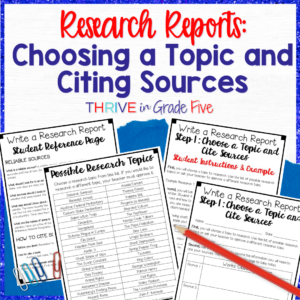
Step 1: Help Students to Choose a Topic and Cite Sources for Research Reports
Students definitely get excited when they find out they are allowed to choose their own research topic. Providing choice leads to higher engagement and interest.
It’s best practice to provide a list of possible research topics to students, but also allow them to choose a different topic.
Be sure to make your research topics narrow to help students focus on sources. If students choose broad topics, the sources they find will overwhelm them with information.
Examples:
Too Broad: American Revolution
Just Right: The Battle of Yorktown
Too Broad: Ocean Life
Just Right: Great White Shark
Too Broad: Important Women in History
Just Right: The Life of Abigail Adams
Be sure to discuss appropriate, reliable sources with students.
I suggest projecting several examples of internet sources on your technology board. Ask students to decide if the sources look reliable or unreliable.
While teaching students about citing sources, it’s a great time to discuss plagiarism and ways to avoid it.
Students should never copy the words of an author unless they are properly quoting the text.
In fact, I usually discourage students from quoting their sources in their research reports. In my experience, students will try to quote a great deal of text and will border on plagiarism.
I prefer to see students paraphrase from their sources because this skill helps them to refine their summarization skills.
Citing sources is not as hard as it sounds! I find that my students generally use books and internet sources, so those are the two types of citations that I focus on.
How to cite a book:
Author’s last name, First name. Title of Book. City of Publication: Publisher, Date.
How to cite an internet article:
Author’s last name, First name (if available). “Title of Article or Page.” Full http address, Date of access.
If you continue reading to the bottom of this post, I have created one free screencast for each of the five steps of the research process!
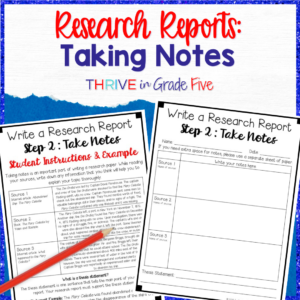
Step 2: Research Reports: Take Notes
During this step, students will use their sources to take notes.
I do provide instruction and examples during this step because from experience, I know that students will think every piece of information from each source is important and they will copy long passages from each source.
I teach students that taking notes is an exercise in main idea and details. They should read the source, write down the main idea, and list several details to support the main idea.
I encourage my students NOT to copy information from the source but instead to put the information in their own words. They will be less likely to plagiarize if their notes already contain their own words.
Additionally, during this step, I ask students to write a one-sentence thesis statement. I teach students that a thesis statement tells the main point of their research reports.
Their entire research report will support the thesis statement, so the thesis statement is actually a great way to help students maintain a laser focus on their research topic.
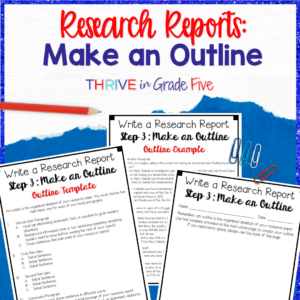
Step 3: Make a Research Report Outline
Making an outline can be intimidating for students, especially if they’ve never used this organization format.
However, this valuable step will teach students to organize their notes into the order that will be used to write the rough draft of their reports.
Because making an outline is usually a new concept for my 5th graders, we do 2-3 examples together before I allow students to make their outlines for their research reports.
I recommend copying an outline template for students to have at their fingertips while creating their first outline.
Be sure to look over students’ outlines for organization, order, and accuracy before allowing them to move on to the next step (writing rough drafts).
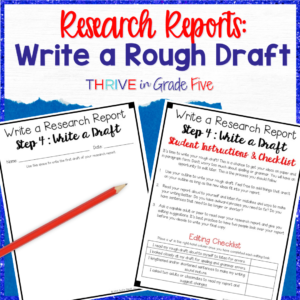
Step 4: Write a Research Report Draft
During this step, each student will write a rough draft of his/her research report.
If they completed their outlines correctly, this step will be fairly simple.
Students will write their research reports in paragraph form.
One problem that is common among my students is that instead of writing in paragraphs, they write their sentences in list format.
I find that it’s helpful to write a paragraph in front of and with students to remind them that when writing a paragraph, the next sentence begins immediately after the prior sentence.
Once students’ rough drafts are completed, it’s time to proofread/edit!
To begin, I ask my students to read their drafts aloud to listen for their own mistakes.
Next, I ask my students to have two individuals look over their draft and suggest changes.
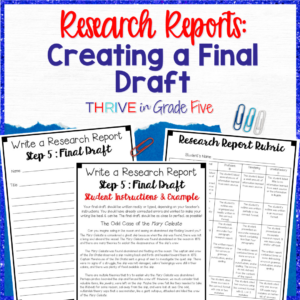
Step 5: Research Reports – Students Will Write Their Final Drafts!
It’s finally time to write final drafts!
After students have completed their rough drafts and made edits, I ask them to write final drafts.
Students’ final drafts should be as close to perfect as possible.
I prefer a typed final draft because students will have access to a spellchecker and other features that will make it easier to create their final draft.
Think of a creative way to display the finished product, because they will be SO proud of their research reports after all the hard work that went into creating them!
When grading the reports, use a rubric similar to the one shown in the image at the beginning of this section.
A detailed rubric will help students to clearly see their successes and areas of needed improvement.
Once students have completed their first research projects, I find that they have a much easier time with the other research topics assigned throughout the remainder of the school year.
If you are interested in a no-prep, step-by-step research report instructional unit, please click here to visit my Research Report Instructional Unit for 5th Grade and 6th Grade.
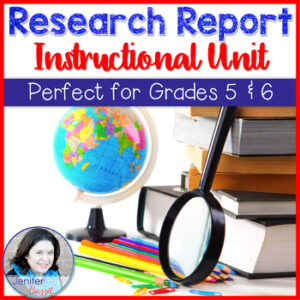
This instructional unit will guide students step-by-step through the research process, including locating reliable sources, taking notes, creating an outline, writing a report, and making a “works cited” page.
I’d like to share a very special free resource with you. I created five screencast videos, one for each step of the research report process. These screencasts pair perfectly with my Research Report Instructional Unit for 5th Grade and 6th Grade!
Research Report Step 1 Screencast
Research Report Step 2 Screencast
Research Report Step 3 Screencast
Research Report Step 4 Screencast
Research Report Step 5 Screencast
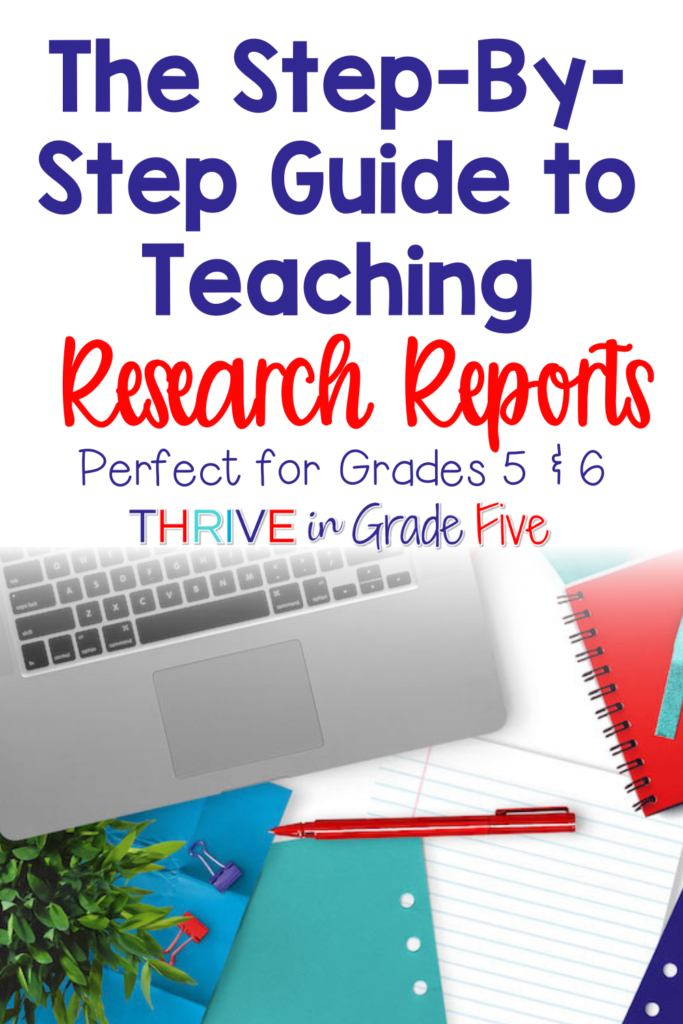

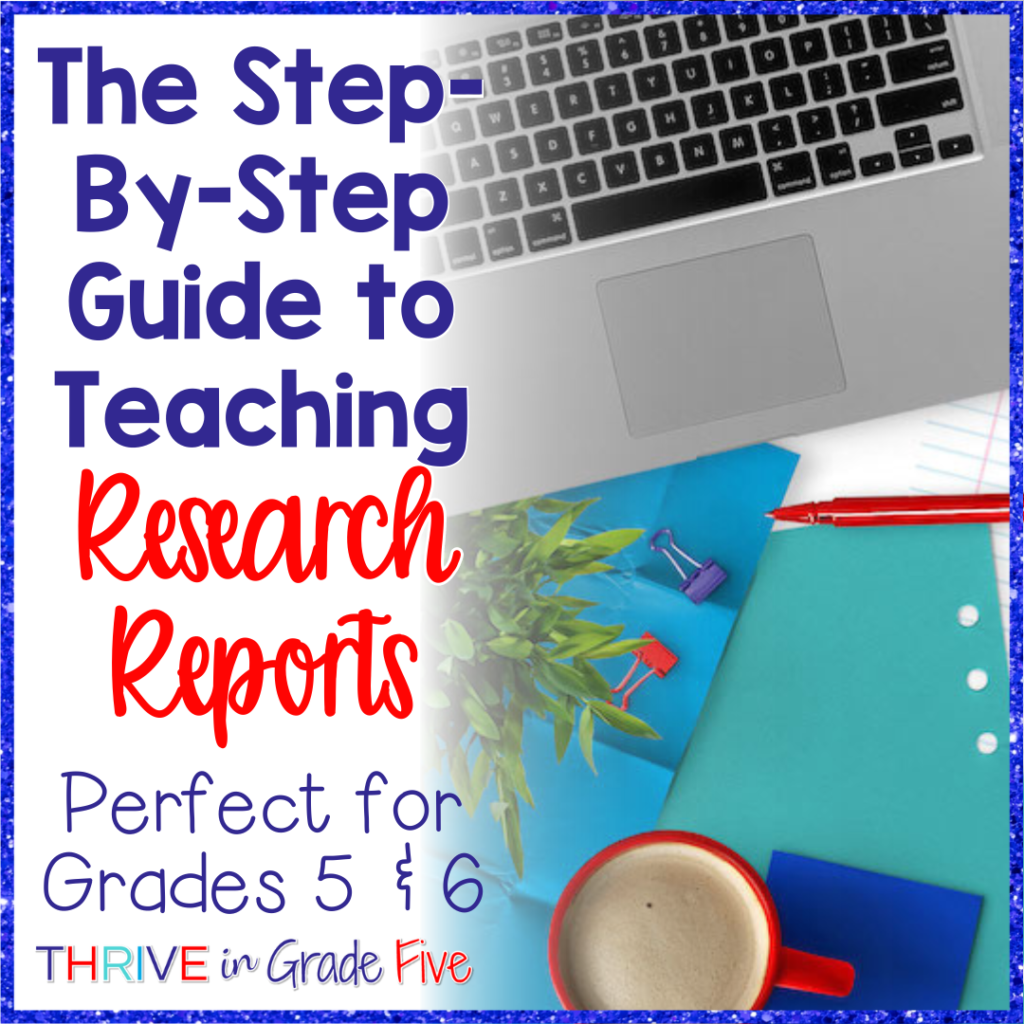
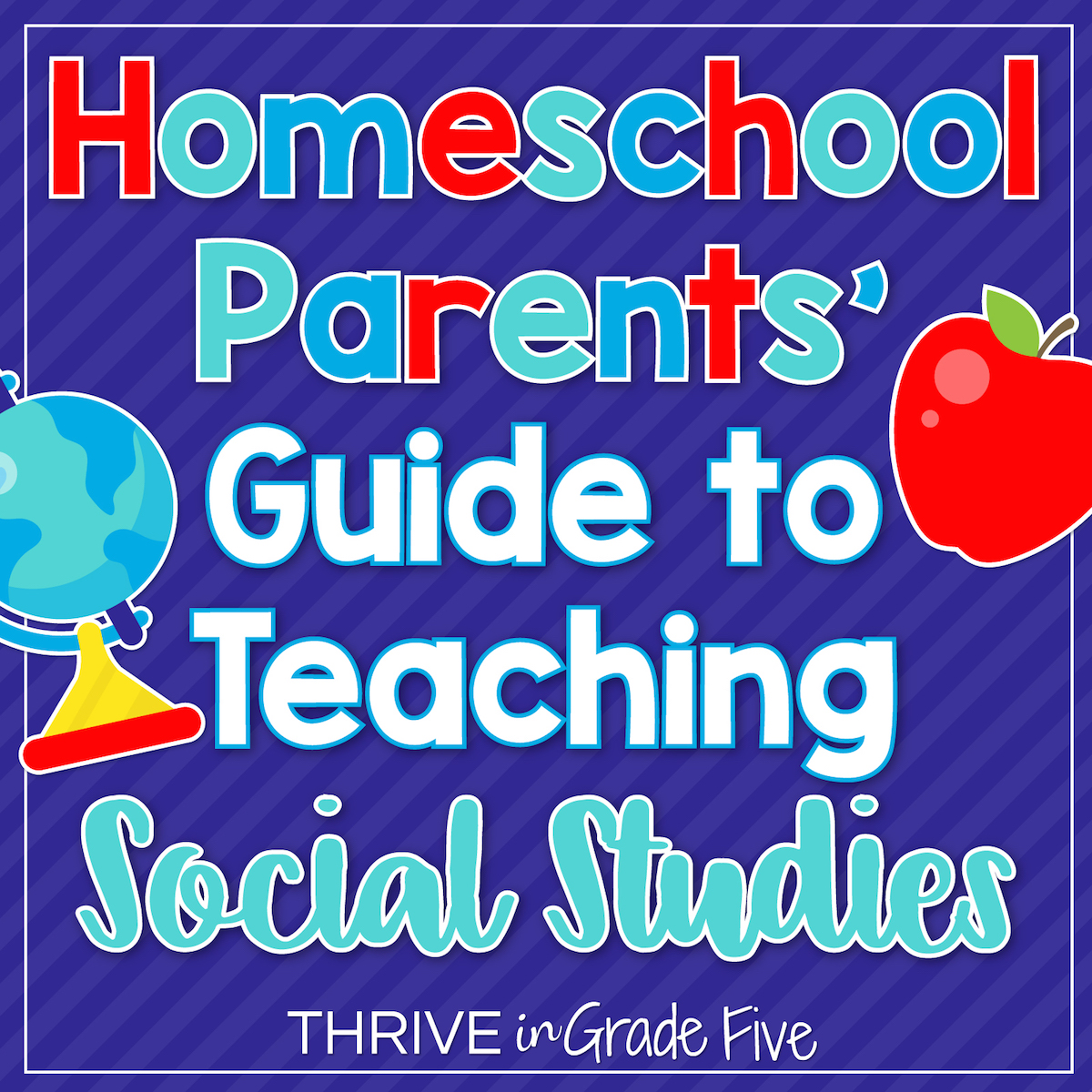
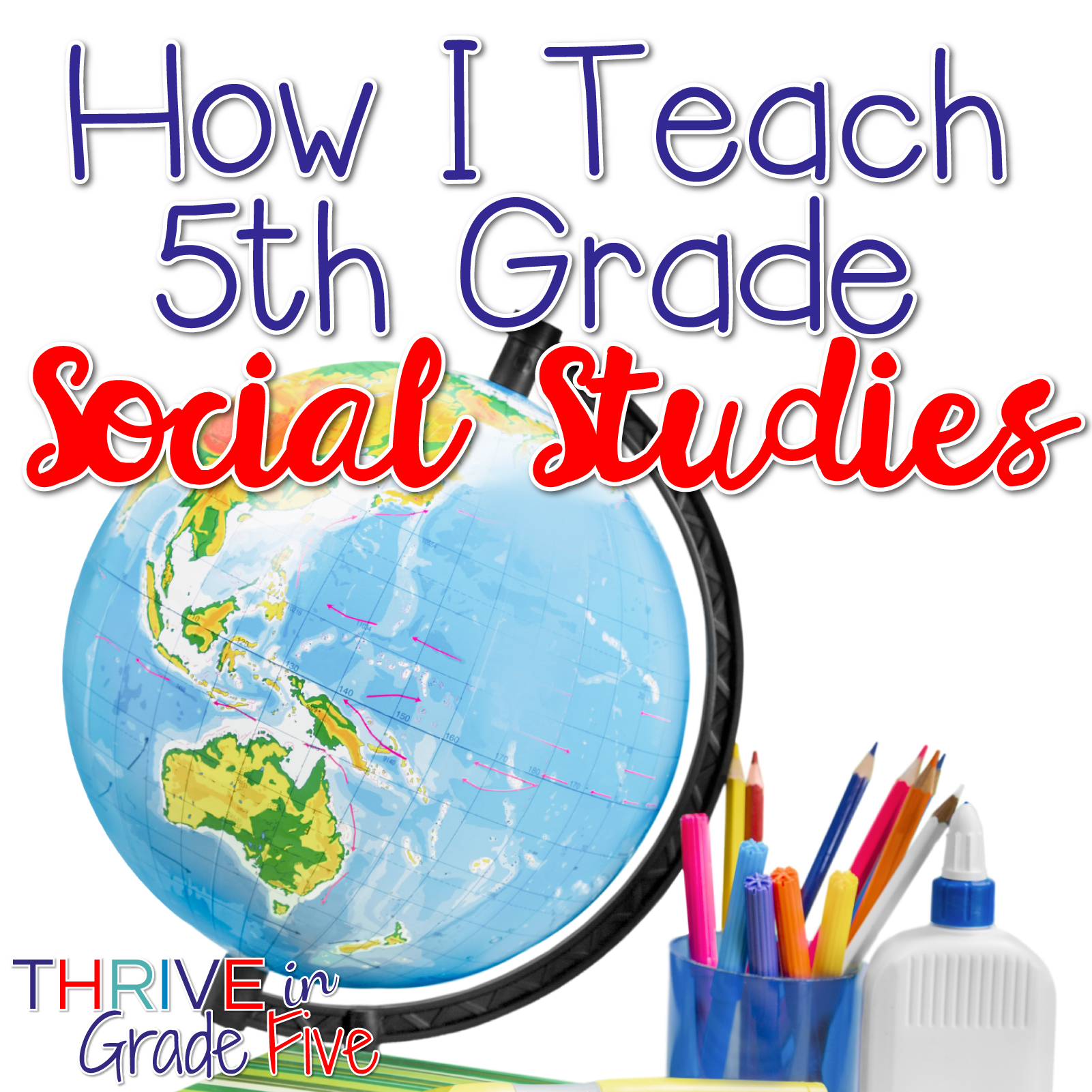
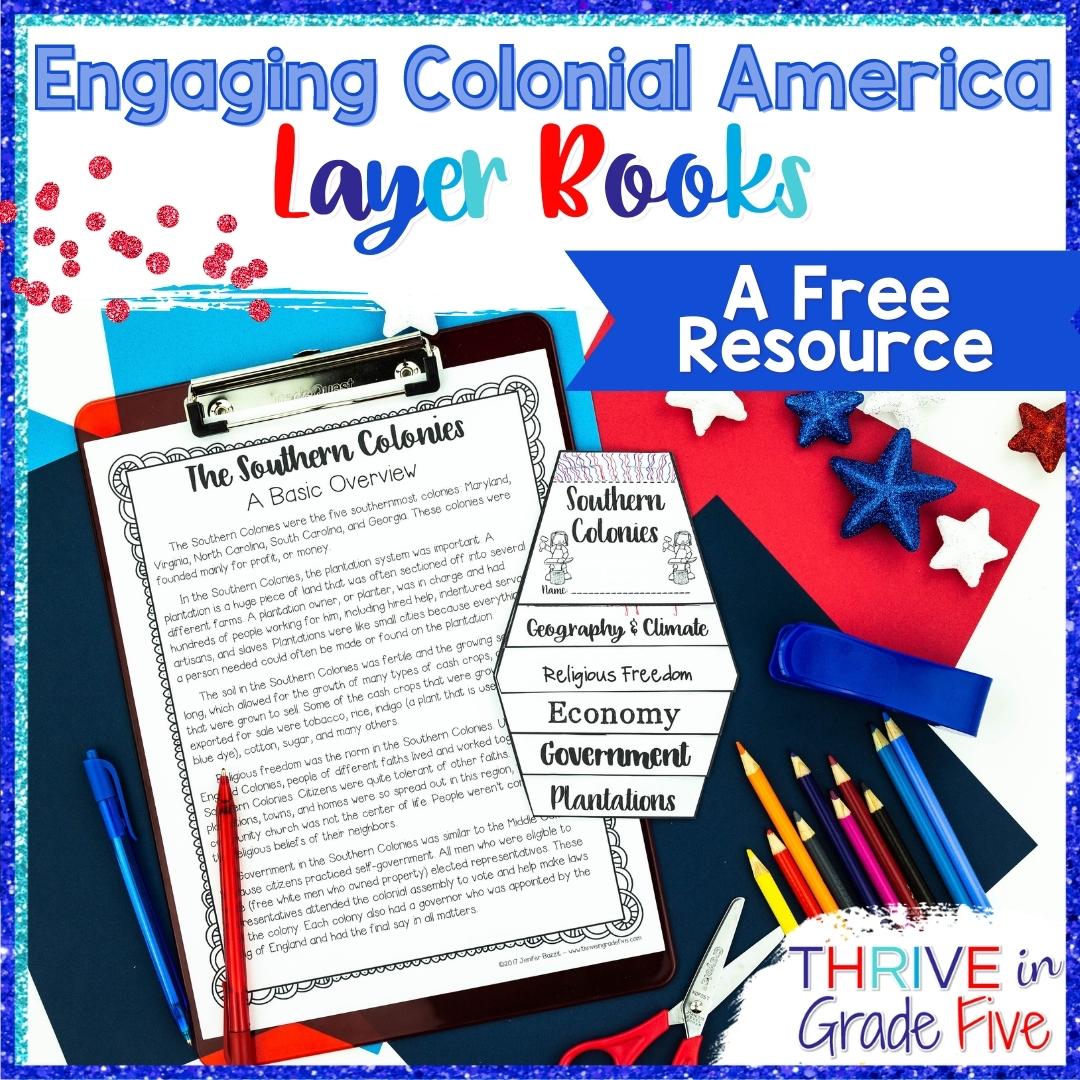
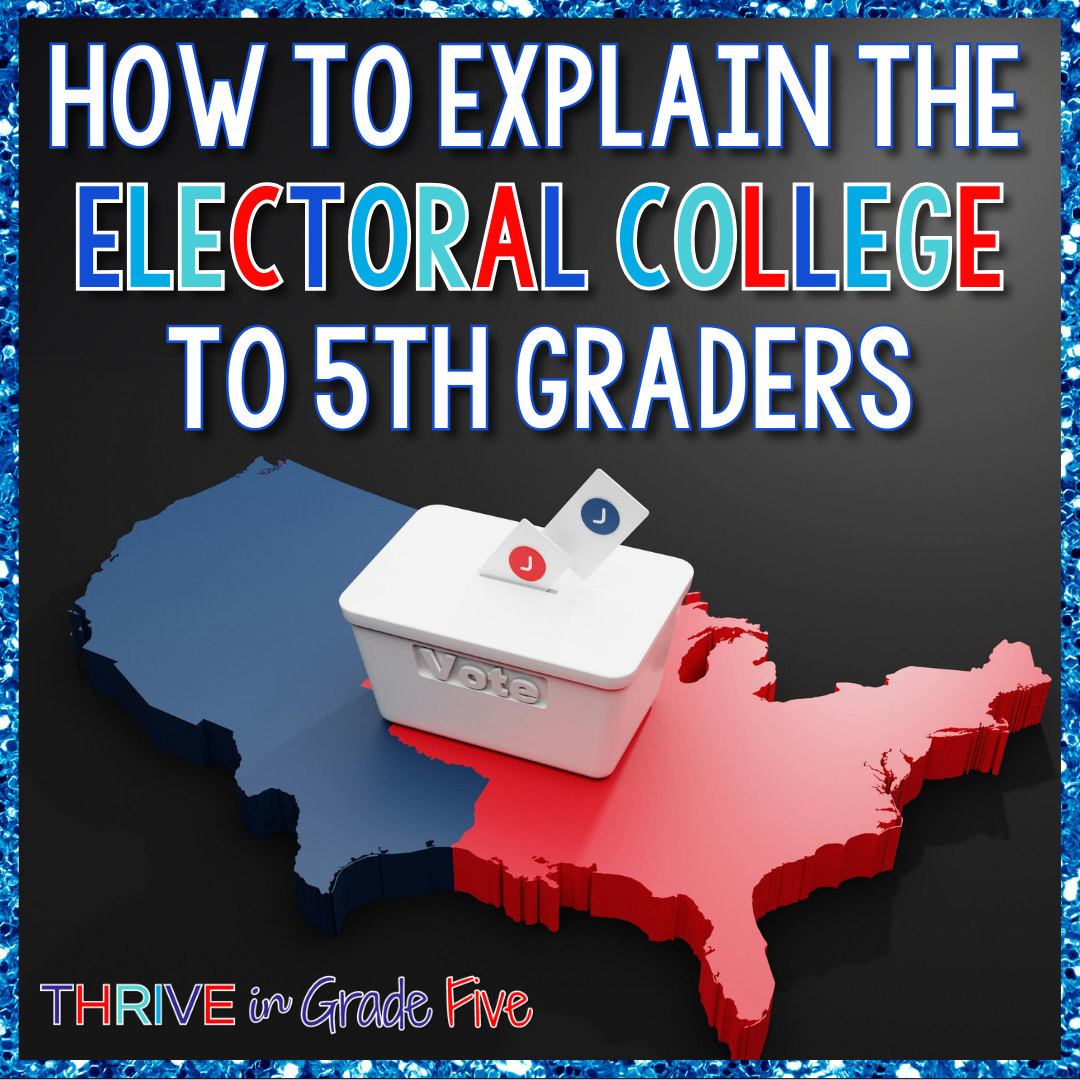


6 Comments
Hi, If i purchase your complete package on grade 5/6 writing does it come with your wonderful recordings on how to teach them? Thanks
Hi Gail! The recordings on this blog post can be used by anyone and I will leave them up 🙂 The writing bundle doesn’t come with any recordings but I did include step-by-step instructions for teachers. I hope this helps!
Thank you for sharing your information with everyone. I know how to write (I think, haha), but I wanted to really set my students up for success with their research and writing. Your directions and guides are just what I needed to jar my memory and help my students become original writers. Be blessed.
You are very welcome, Andrea! Thank you for this comment 🙂
Hi Andrea,
I am a veteran teacher who has taught nothing but primary for 25 years. However, this is my first year in 5th. I’m so excited to have found your post. Can you direct me to how I can purchase your entire bundle for writing a 5-paragraph essay.
Thanks,
Sue
Sure, Susan, I can help with that! Here is the link for the 5th Grade Writing Bundle: https://www.teacherspayteachers.com/Product/5th-Grade-Writing-Bundle-3611643